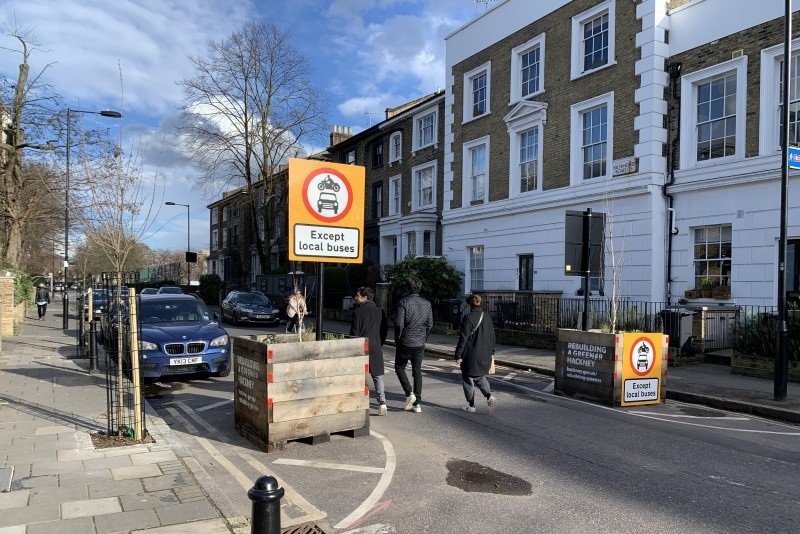
Initial analysis of a low traffic neighbourhood (LTN) in Hackney shows ‘promising early indications’ of its ability to reduce traffic and support people to walk, shop and cycle locally.
LTNs use a combination of bollards, planters and Automatic Number Plate Recognition (ANPR) cameras to remove ‘through’ motor vehicle traffic on specific residential roads.
The London Fields LTN was introduced by Hackney Council last September, as part of efforts to rebuild a greener borough in the wake of the Covid-19 pandemic.
Traffic counts were taken during November’s lockdown, when schools were open but overall traffic levels in Hackney were lower than pre-pandemic levels. The counts were then compared with data from before the pandemic.
It found that traffic inside the London Fields LTN was down by an average of 44%, with traffic on boundary roads around the LTN also down by 21%.
A benchmarking exercise was carried out to understand the impact of lockdown on traffic over the same time period.
This shows there were traffic reductions of 16% nationally on urban roads, 15% on the A12 and an average of 14% reductions on main roads in the borough – meaning the initial average reductions in and around London Fields LTN exceed these benchmarks.
Hackney Council says it will be repeating traffic monitoring of its LTNs during the early summer to ensure it is monitoring the full effects as the Capital emerges from lockdown.
Cllr Mete Coban MBE, cabinet member for transport, said: “These interim figures show a broad reduction in traffic across the London Fields area, helping to rebuild a greener Hackney for our residents and supporting them to walk, shop and cycle locally.
“Some of the figures are stark, with around 1,000 vehicles now using Richmond Road each day, a road that was previously blighted by 9,000 cars daily.
“What’s encouraging at this stage is that there are also reductions in traffic on boundary main roads too – although there are roads where residents have concerns that we are looking at very closely.
“We’ve always been clear that we’re happy to tweak schemes where appropriate so we’ll continue to look at the data and make changes where necessary.”
Comment on this story